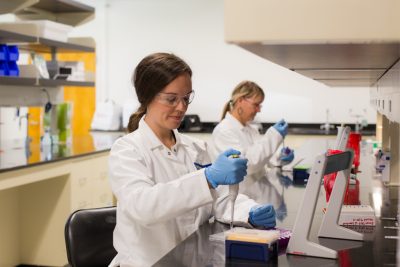Background: Best practice standards for measuring analyte levels in saliva recommend that all biospecimens be tested in replicate with mean concentrations used in statistical analyses. This approach prioritizes minimizing laboratory-based measurement error but, in the process, expends considerable resources. We explore the possibility that, due to advances in salivary assay precision, the contribution of laboratory-based measurement error in salivary analyte data is very small relative to more important and meaningful variability in analyte levels across biological replicates (i.e., between different specimens). To evaluate this possibility, we examine the utility of the repeatability intra-class correlation (rICC) as an additional index of salivary analyte data precision. Using randomly selected subsamples (Ns=200 and 60) of salivary analyte data collected as part of a larger epidemiologic study, we compute the rICCs for seven commonly assayed salivary measures in biobehavioral research – cortisol, alpha-amylase, c-reactive protein, interlekin-6, uric acid, secretory immunoglobulin A, and testosterone. We assess the sensitivity of rICC estimates to assay type and the unique distributions of the underlying analyte data. We also use simulations to examine the bias, precision, and coverage probability of rICC estimates calculated for small to large sample sizes. For each analyte, the rICCs revealed that less than 5% of variation in analyte levels was attributable to laboratory-based measurement error. rICC estimates were similar across all analytes despite differences in analyte levels, average intra-assay coefficients of variation, and in the distributional properties of the data. Guidelines for calculating rICC are provided to enable investigators and laboratory staff to apply this metric and more accurately quantify, and communicate, the magnitude of laboratory-based measurement error in their data. By helping investigators scale measurement error relative to more scientifically meaningful variability between biological replicates, the application of the rICC has the potential to influence research strategies and tactics such that resources (e.g., finances, effort, number/volume of biospecimens) are allocated more efficiently and effectively.
The case for the repeatability intra-class correlation as a metric of precision for salivary bioscience data: Justification, assessment, application, and implications

